The Secret History of Hyderabad State of the Nizam (South India; 1724 – 1948)
Last Updated on July 15, 2021 by Hamad Subani
The Aftermath
The Prophecy of the Mystery Saint Revisited
As we can recall, before leaving Delhi for good, legend has it that Asif Jah I did one last thing. He visited a Saint he highly revered, and whose identity remains a subject of speculation. After informing the Saint of his desire to leave Delhi for good, the Saint gave him his blessings and suggested he take some bread for the long journey ahead. Asif Jah I took seven pieces of this supposedly blessed bread. It is unclear what happened next, but it seems the Saint hinted that the dynasty of Asif Jah I would continue till seven generations. This legend was celebrated in Hyderabad State. To quote an Urdu ballad that was recited in district schools every morning, Hyderabad State was referred to in the following glowing terms:

Aye yadgar e Mughliya
tu hai dua e auliya
Hai rizq ka tujh par nishan
aye hurriyat ke badban
Aye markaz e aman o aman
tujh par fida peer wo jawan
Behr safa mein reh buland
Translation:
O memorial of the Mughals
you are the prayer of the Saints
Livelihood is marked on you
O standard bearer of liberty
O capital of peace and trust
for you both the old and young are ready for sacrifice
May you sail strong in the sea of change.
The first line refers to the proud servitude of Asif Jah I to the Mughals, and how Hyderabad State ended up becoming the only surviving political legacy of the Mughals. The second line is a reference to the legend of the Mystery Saint. According to some, the seal of the Nizam was also shaped like a bread, and in some representations, it does have a distinct jagged border.

Arms: The name and titles of the Nizam in Arabic.
Crest: The motto Alazmatulla (Glory belongs to Allah) in Arabic and the royal turban within a garland.
Supporters: Two tigers collared.
Motto:
1. H.E.M. RUSTUM IDOWRAN ARASTUI ZAMAN.
2. SIPAH SALAR MUZAFFULMULK WALMAMALIK FAITHFUL ALLY OF THE BRITISH GOVERNMENT ASIF JAH MIR OSMAN ALI KHAN BAHADUR LIEUT. GENERAL FATEH JUNG
3. NIZAMUD DOWLA NIZAM UL MULK
4. HYDERABAD DECCAN
In between 3 and 4: GCSIGBEOV.
Osman Ali Khan was the Seventh generation of Asif Jah I, and by this prophecy, he would be the last to rule. This proved to be true.
Osman Ali Khan was the Seventh generation of Asif Jah I, and by this prophecy, he would be the last to rule. This proved to be true.
But a rhetorical question remains. Why didn’t the Mystery Saint bless all generations of Asif Jah I? Were they not so deserving? An interesting theory is that the Mystery Saint being a true Muslim could only pray for fellow Muslims. He could only bless those successors, who despite their faults and sins, still maintained some essence of Asif Jah I. Does that mean that the next Crown Prince Mukarram Jah had nothing in common with Asif Jah I? We may never know. But we do know that something unusual happened to the line of the Nizams after the 7th Nizam. Osman Ali Khan was somehow convinced to make his grandson Mukarram Jah the next crown prince, overriding his own son Crown Prince Azam Jah. It seems that he had been turned against Azam Jah by having scandalous information about the prince constantly relayed to him by certain interests. Mukarram Jah’s mother, Princess Durru Shehvar was the daughter of Abdul Majid II of the Ottoman dynasty, who was the last heir apparent to the Imperial Ottoman throne and the last Caliph of the Muslim world. Similarly, a cousin of Princess Durru Shehvar named Princess Niloufer married the other son of Osman Ali Khan, Moazam Jah. Both of these marriages took place in 1931. And back then, these marriages were welcomed by Muslims of the Subcontinent for giving greater Islamic legitimacy and clout to the Nizam. But consider the ignominious circumstances in which the same Abdul Majid II abandoned the Ottoman throne as well as the Caliphate of the Muslim World. To quote,

In the morning of the third day of March 1924, it was announced that the Greater National Assembly had approved the abolishment of the Khilafah and the separation of the Deen from the state. On the same night, Mustafa Kemal sent an order to the governor of Istanbul stipulating that the Khalifah Abdul-Majid should leave Turkey before the dawn of the next day; so he went with a garrison from the police and the army to the Khaleefahs palace in the middle of the night and the Khaleefah was forced to climb aboard a car that took him through the borders towards Switzerland, after he had been supplied with a suitcase containing some clothes and money. Two days later, Mustafa Kemal gathered all the thrones princes and princesses and deported them outside the country. All religious functions were cancelled and the Awqaf (endowments) of the Muslims became the property of the state, and the religious schools were turned into civil schools under the auspices of the education ministry.[1]Abdul Qadeem Zallum, How the Khilafah was Destroyed (Gloucester: Al-Khilafah Publications, 2000) 185.
Would a genuine Caliph give up so easily and abandon all the loyal people who were clamoring to die for him fighting till the very end?
In the 16th Century, the Ottomans were looking forward to overrun the rest of Europe and put an end to the remainder of European-Illuminati dynasties through a policy of perpetual jihad. Had they succeeded, the world would have been a much better place. The world would be safe from the specter of the British Imperialism, which exported Illuminati agenda to the furthest parts of the world. The Americas would have been settled by people other than the philistine Anglo-Saxons and the brutish Spanish, and without the genocide of the native populations. The European Illuminati would never grow powerful enough to foment World Wars. But the Ottomans were stalled by a vicious campaign of intrigue and conspiracy of the Illuminati. They had infiltrated their royalty via marriage through women connected by bloodline to the Illuminati Byzantine Royal Family (crypto-Byzantines). In my book The Secret History of Iran, I have documented the relentless efforts of this cabal to destroy the Ottomans. The Byzantines were the very same European-Illuminati dynasty that the Ottomans had put an end in the 16th Century. It is unclear when they managed to consolidate the seat of the Caliph/Sultan. But there is reason to believe Sultan Abdul Hamid II and all of his successors were in league with this nefarious cabal.

Following 1924, most of the Ottoman royal family (now consisting of mainly of crypto-Byzantines) moved to the Mediterranean coast of France, which is a notorious den of gambling, drinking and prostitution (an unlikely Islamic choice). After destroying the Ottomans, were the crypto-Byzantines now infiltrating Hyderabad State using the emotive appeal the Office of the Caliph carried? There are several indications that both these princesses had least empathy for Islam. Princess Niloufer startled Osman Ali Khan by her disregard for the veil and her penchant for late night cocktail parties. Unable to produce a child, she later divorced Moazam and married Edward Julius Pope, a British diplomat. This is rather alarming, given the fact that real Ottomans detested the British, firstly as non-Muslims, secondly as the biggest enemies of the Ottomans in World War I. Here is some more information on Edward Julius Pope, who is clearly linked to British Intelligence:
From 1955 to 1990, Mr. Pope lived in Paris, operating in 25 countries in Europe, North Africa and the Middle East for multinational corporations like the Owens Corning Fiberglas Corporation of Toledo, Ohio. During part of that period he also served the Defense Department and National Security Council in various capacities, and was awarded the Eisenhower Medal for his services. In World War II he commanded PT boats on Guadalcanal and in the Philippines. He took part in more than 40 combat missions and 5 intelligence operations behind enemy lines, and retired as a commander in the Naval Reserve.
Princess Durru Shehvar also opposed the veil when she stayed in Hyderabad. She had her two sons educated in Britain. One of them, the current titular Nizam Mukarram Jah was educated at the Royal Military Academy Sandhurst, the premium “spook school” which also produced Iskandar Mirza.
Both princesses immediately lost interest in Hyderabad once it was ceded to India. This resulted in the Nizam’s assets in India being encroached and looted. Had Hyderabad State not been ceded, these princesses would be kingmakers. Had they been selected to create a new line of rulers more amenable to British Intelligence? What is even more interesting is the fact that while Mukarram Jah was living as a recluse in Turkey, his favorite hobby was examining pre-Islamic ruins.[2]John Zubrzycki, The Last Nizam (Sydney: Picador, 2007) xv. We are told that these ruins were “Roman” in origin, it is more likely that they were of the Byzantine Empire, which predated the Ottomans in Turkey. Why would the crown prince of Hyderabad State forsake Hyderabad and its numerous archaeological sites for the ruins of Byzantine? It is important to note that the Byzantines were the most stubborn opponents of Islam, and even after they had been vanquished on the battlefield, they continued to subvert the Islamic world by infiltrating Muslim nobility.

But what about the scenario of the Nizam Osman Ali Khan continuing as a titular head with British Intelligence running the show? While this arrangement may have been stable and attractive in the short term, it does not take long to put two and two together and realise that the British would create another 1857 for the Muslims of Hyderabad State in the long term. As I have said earlier, the real goal of the Illuminati was the Sovietization of India. What better place to start it than Hyderabad State? It is no coincidence that while the British fully assented to the continuation of the reforms of Salar Jung I which were transforming Hyderabad State into a powerful nation, at the same time they were also planting the seeds of a Soviet-Communist insurgency in the countryside. One well known Communist ideologue Makhdoom Mohiuddin suspiciously stayed one step ahead of the highly efficient police of the Nizam. Suspiciously, the reforms of Salar Jung I were later whittled down when it came to administering the countryside, which was left to the mercy of rapey Rao and Reddy landlords who served as tributaries of the Nizam. Why were the Razakars were unnecessarily terrorizing the poor countryside, driving villagers into the arms of the Communists? What would erupt from the districts of Hyderabad State was the Pol Pot of India, which would steadily consolidate all of Hyderabad State, and even the city of Hyderabad. By then, all the shady Muslims connected to the conspiracy would be quietly leave, but the rest would suffer the same fate of the South Vietnamese ruling class when the VietCong descended upon Saigon. And what would happen to the rest of the Subcontinent when the Soviet-backed Communists consolidated the Nizam’s wealth and the infrastructure of Hyderabad State? After Osman Ali Khan ceded Hyderabad State to India, the Powers That Be were still unwilling to accept the fact that the Nizam had successfully undone a century worth of effort and intrigue. Undaunted, they still continued with this “Plan B.” A Communist insurgency swept Telangana. But before the Soviets could invite themselves, the rapey Rao and Reddy landlords fled the countryside for Hyderabad rather than continue their centuries old practices of oppression. This resulted in the movement, now deprived of a justified cause, running out steam.
While the British fully assented to the continuation of the reforms of Salar Jung I which were transforming Hyderabad State into a powerful nation, they were also secretly planting the seeds of a Soviet-Communist insurgency in the countryside.
Whatever reasons Osman Ali Khan had for terminating Hyderabad State in 1948, there is reason to believe that Osman Ali Khan was not only cognizant of the Prophecy of the Mystery Saint, but fully accepted it. In 1994, a close confidante of the Nizam, Major-General Syed Ahmed El Edroos, the former Commander of the State Army of Hyderabad published a revealing memoir on the events of 1948. It was published locally and soon disappeared from bookshelves, never to be reprinted again. It was called (hold your breath)……………. Nizam of the Seven Loaves.
Hyderabad State, Post-1948
Osman Ali Khan’s decision to terminate Hyderabad State did save his subjects from major disaster in the long run. But sadly, the assassination of Mahatma Gandhi meant that the Congress was fumbling in the dark about the future of India (which now included that of Hyderabad State). There was little effort to retrace Gandhian thought (apart from celebrating the success of Gandhi’s movement against the British), and socialism was imported to fill the void, and to draw India closer to the Soviet Union. In an effort to erase the boundaries of Hyderabad State which was largely driven by unwarranted fears and paranoia, Telugu speaking districts of the Northern Circars (Andhra) and the Southern coast which were formerly under the (British) Madras Presidency were amalgamated with Hyderabad State (now Andhra Pradesh), while many of its Marathi speaking districts were distributed to the neighbouring state of Maharashtra. The engineers of this vandalism failed to realise that Hyderabad State had shaped the culture of its citizenry, for better or for worse. This common destiny was too deep to be erased, or to be supplanted with new ties of language or religion.
Osman Ali Khan’s decision to terminate Hyderabad State did save his subjects from major disaster in the long run. But sadly, the assassination of Mahatma Gandhi meant that the Congress was fumbling in the dark about the future of India (which now included that of Hyderabad State).
The ensuing communal riots which engulfed the districts of Hyderabad State after its union with India left a bitter foretaste in the minds of its Muslim citizenry. Most events of these period were covered up. And while there was a secret investigation into the communal riots on the Indian side, there were no attempts at reconciliation or justice. The focus was to bury the collective past of Hyderabad State at all costs. Otherwise, uncomfortable secrets pertaining to the role of the British in India would pour out. This was to be avoided at all costs, because British Intelligence was still actively driving the destiny of India and Pakistan. Driven by unwarranted fears, the Indian people did succeed in burying Hyderabad State, its borders, its language, its ethnic groups, its culture, its institutions and most sadly, its history. Even the most educated IIT topping, EAMCET whopping, US H1B Visa acquiring citizenry of Hyderabad are usually ignorant of the history of Hyderabad State, and in their hurried pace of life, there is little room for any quest for truth.

School textbooks make little mention of Hyderabad State, and when they are forced to do so, they repeat the cartoonish interpretations of Western establishment historians. The Nizam is only remembered for his fabulous wealth (even though he was required to keep huge reserves of personal wealth for unwarranted situations), for pandering to the Razakars, and for ignonimously losing his kingdom in a “police action,” implying that his loyal police force decided to ditch him for India. There is absolutely no mention of Salar Jung I, or of the hostile takeover of British Intelligence following 1883. Neither is there any mention of Asif Jah I, or the existential struggles of subsequent Nizams to protect their kingdom from the British (in particular the last one). The most tragic epilogue is that British Intelligence got the final say in the historical coverup. The Agent-General of India in Hyderabad State in 1948 was K.M. Munshi, a mysterious politician from Baroda and a student from Aurobindo Ghosh. It is unclear how he got nominated for this very important post when more dedicated independence activists were also available. Gandhi had originally asked him to leave the Congress because of his demands for war with the Muslim League, but he managed to worm his way back in. Immediately after independence, he abandoned the Congress and co-founded the Swatantra Party, a neo-liberal party which seemed to be populated by former princes (and with an occult pentagram as its symbol). He later joined the Jan Sangh (a predecessor of the BJP). He was also the founder of the Bharatiya Vidya Bhavan (a Hindu educational trust) and a co-founder of Vishwa Hindu Parishad (a right wing Hindu organization which has recently made headlines for vandalizing a gateway to the Taj Mahal). In a recent book, Anuj Dhar (citing an own admission of K. M. Munshi) has implied that K. M. Munshi had a connection to British Intelligence.[3]Anuj Dhar, What Happened to Netaji? (New Delhi: Vitastaa Publishing Pvt Ltd, 2016) 257. K.M. Munshi would go on to write a book about the Fall of Hyderabad (The End of an Era/Hyderabad Memoirs) and this book got pushed around into becoming the basis for the current official story, which airbrushes the role of British Intelligence, while wrongly portraying the fall of Hyderabad as a communal struggle between Hindus and Muslims. Even today, sections of his book are translated into Urdu and regurgitated across Urdu dailies.

When the British snatched the Northern Circars (1763) and later the areas of the South-East coast of Hyderabad State, they completely changed the administrative structure of those regions, and this soon enough changed the culture of its inhabitants, making them very different from the citizenry of Hyderabad State in terms of ideas and outlook. (Although they still remained mainly Hindu and Telugu speaking). As with the rest of the Indian regions that were under their direct control, the British sought to transform the region into a captive economy suitable for tax farming, whose sole objective was to produce revenue which could be remitted back to Britain every year. And thus, armies of bureaucrats were created whose very job was to collect all the different taxes the British kept inventing….cess, octroi, commission, surcharge, license, permit, duty, excise, customs, stamp paper, income tax, wealth tax, sales tax, gift tax, interest tax, penalty, levy, vice tax. As such, the main officer assigned for extracting revenue from a district was called a Collector. This denotes their lack of a service mindset, because it naturally assumed that such officers would always be collecting, extracting, taxing, extorting and financially raping financially any district the British conquered.. Under the collector were an army of “civil servants,” most notably the UDCs (Upper Divisional Clerks) and LDCs (Lower Divisional Clerks). Their upper brass were even housed in special residential areas, isolated from the realities of the common people (a practice which continues till this day in India). The British were fairly tolerant of the inherent corruption among these bureaucrats because of the revenue they brought in. It was considered one of the biggest perks of these despicable jobs. This would later evolve into an attitude of “equal opportunity corruption” that swept Indian government employees after independence. On the other hand, the Nizam’s administration was authoritarian. Corruption in lower ranks existed but was always concealed. Because retaliation and dismissal was swift. The Nizam never maintained armies of bureaucrats. Neither was the Nizam’s bureaucracy so invasive or intrusive. Matters were decided on a case-by-case basis with emphasis on justice rather than the British approach of containing all issues within a rigid set of rules. On the other hand, police and law enforcement authorities were very vigilant, clamping down on ruffians and rewarding good behaviour. My great-grandfather, while passing through the forests of Ailapur, killed a leopard using a dagger. When news reached the court of the then Nizam Mahbub Ali Khan, he immediately rewarded my great-grandfather with a silver-threaded turban (Leopards were considered a public menace). It had such value that it was divided among his children when he passed away. Taxes were minimal. There was no such thing as income tax or taxes on essential commodities. And as a result, Hyderabad State is often remembered for its low prices of essential commodities. The Hyderabadi Rupee, the only currency other than the Indian Rupee permitted by the British in the Subcontinent, was once almost equivalent to the US dollar (Today 67 Indian Rupees are worth a dollar). Unlike the British, the Nizam’s administration was not uniform. The modern armies of the British shamelessly went to war against minor powers and appropriated their territory, as in the case of the Polygar wars of Tamil Nadu. After the collapse of Mughal authority in Uttar Pradesh, the British foisted Muslims (who were more educated and cultured back then) upon the local population as unpopular revenue collectors and authority figures, and this created communal tensions which simmer to this day. The Nizam on the other hand, continued the Mughal tradition of accommodating the authority of regional interests in exchange for commitments of loyalty and token amounts of tribute. The upside is that local culture was spared from intrusion. It is only in the former dominions of Hyderabad State that one can still find untampered and untouched “time capsules” of Telugu culture (if you know where to look). The downside was that the Raos and Reddys of Hyderabad State became increasingly rapey. The Mughals on the other hand, protected their peasants from rapey landlords by creating agricultural safe havens in their crown lands, and these safe havens emerged as the powerhouses of Mughal India. While Salar Jang I did outline similar strategies, the Powers That Be whittled down their implementation because they deliberately sought to create a Soviet-Communist insurgency in the countryside as part of their longterm plan.
The Indian Government had the option to continue the progressive policies of agricultural development and industrialization, which were a legacy of Salar Jung I. Even after the hostile takeover of British Intelligence, the Powers That Be allowed industrialization to proceed because they intended to create a nation out of Hyderabad State. The scale of development and industrialization which took place during and after Salar Jung I has no parallel with any other part of the Subcontinent. After 1948, not only was there opportunity to continue these programs with renewed impetus, but to transform Hyderabad State into a model for industrial development for the rest of the Subcontinent. But in their short-sightedness, the new powers decided to bury everything associated with Hyderabad State, and in effect threw out the baby with the bath water. Qualified and able administrators who had been entrusted with the administration, law enforcement, development and industrialization of Hyderabad State found themselves transferred to other parts of India. Their shoes were filled with Andhrites, Maharashtrians, and pushy North Indians, many of whom were unqualified. And most were too cynical of the achievements of Hyderabad State to continue them. The demographics of Hyderabad started rapidly changing with the influx of Andhrites, Maharshtrians, North Indians, refugees from Pakistan and Gujarati businessmen on a mission to counterfeit everything, from masalas to floor tiles.
The scale of development and industrialization which took place during and after Salar Jung I has no parallel with any other part of the Subcontinent.
Mahatma Gandhi opposed unjustified taxes. This was the crux of his opposition to the British. And his opposition extended to tax-collecting bureaucracies, such as those that had been established by the British in Andhra. One of his earliest calls to action was against the British practice of taxing basic neccessities such as salt. Unlike Hyderabad State, Andhra was under direct British rule, giving its subjects every opportunity to respond to Gandhi’s calls to action. Yet, response to the Freedom Movement was mainly tepid. This was because many people had wholeheartedly accepted their role in the predatory bureaucracies established by the British. They cherished such jobs as status symbols. They even found a strange echo of the reprehensible caste system in these bureaucratic jobs (such as the DOG-GOD relationship between LDCs and UDCs). Had Mahatma Gandhi been alive, he would have abolished all unjustified taxes, and as a fallout, these bureaucracies would have also ceased to exist. But the assassination of Mahatma Gandhi saw the revival of these instruments of predation. And short-sighted politicians welcomed the inflow of revenue at Delhi. They never considered how such unneccesssary taxes were harming economic activity in the long run. And since Hyderabad State had none of these giant predatory bureaucracies, the Andhrites were entrusted with establishing them for the first time ever in Hyderabad State. What remained of the original administration of Hyderabad State was overhauled to make it compatible with the rest of India, which in turn was still a perfectly intact British bureaucracy. This meant English-speaking, English writing babus bureaucrats were required, and many happily left Andhra for Hyderabad.
The locals of Hyderabad State resented what they saw as the thankless appropriation of Hyderabad State by Andhrites. Their political party, the Telugu Desam, was founded by an Andhrite who once played “God” in Telugu movies. He would die from a heart attack after losing his political empire to a savvy but backstabbing son-in-law. The Telugu Desam then went on to backstab its historical ally, the Congress Party, in favour of the BJP. Some Andhrites did behave like colonists, creating cabals in government bureaucracies, diverting water from irrigation projects to the Andhra region, and even creating Andhrite-only residential enclaves, where “outsiders” are promptly shooed away from leasing or renting. There are two sides to every story. The Andhrites on the other hand, found the locals of the erstwhile State of Hyderabad to be too relaxed, laid back (or lazy?), uncompetitive (or less materialist?), late rising and prone to strike. But again, if the Andhrites were indeed such wizards of productivity, wouldn’t they be more than content in Andhra, creating several “Hyderabads” there a long time ago? 66 years later, the mainly Teluguite citizenry of erstwhile Hyderabad State would demand separation from the Teluguites of Andhra, resulting in the creation of a separate Telangana State. This separation was approved by the Congress Party which was in power. It is too early to tell how true this new movement is to recovering the rights of the citizenry of erstwhile Hyderabad State. Sadly, some of the major political leaders produced by Telangana in the past, only betrayed it in the most vicious ways.
Prior to 1948, most citizens of Hyderabad State were indifferent to the world beyond their borders, and lived peaceful, idyllic lives. But after 1948, most Muslims of Hyderabad became expatriate workers, migrating to the Gulf, and later, to North America. But as citizens of India, they were not allowed to have dual citizenship, even if they earned the citizenship of other countries. And North Indian consular officers, who regarded passports as a selective privilege rather than a right, became infamous for their contemptuous attitudes.
Hyderabad City
Perhaps the biggest and most visible casualty of the cessation of Hyderabad State was the fate of the city of Hyderabad. Given that the Indian Government sought to start development of the region on a blank slate, where the previous history, culture, people and values of Hyderabad State played little role, it was more than befitting that they chose a new capital for the region. But instead of setting up new infrastructure, they sought to continue with Hyderabad as the capital. The Andhrites fell so hard for the infrastructure that Hyderabad city offered them that they began pursuing a Hyderabad-centric model of development for the entire Andhra Pradesh! Sadly the Telangana countryside was blatantly ignored. And even till the 80s, the countryside resembled a Nizam era time capsule. Unlike Western cities which feature dense downtowns full of skyscrapers, Hyderabad city lacked the infrastructure for vertical growth. As a result, the city of Hyderabad keeps sprawling, swallowing up entire towns and villages every year. The Andhrite Chief Minister of Andhra Pradesh Chandrababu Naidu, partly inspired by a trip to Malaysia, is credited with laying the foundation for the parallel universe next to Hyderabad known as Hitech City/Cyberabad/Madhapur. This “Poor Man’s Bangalore” has turned Hyderabad into a prime destination for Business Process Outsourcing (BPO) of Western Companies. While this has brought a windfall of jobs and prosperity to Hyderabad city, some have questioned the viability of this development model. Since smaller towns and villages lack the specialized infrastructure to attract BPO, the same model can never be implemented there. The result is a massive exodus of talent from the villages and the countryside. This is a complete inversion of the Gandhian economic model, where villages were meant to be the most important economic units, drawing talent, culture and enterprise from everywhere else. It is also a betrayal of the approach taken by Salar Jung I, in which talented Hyderabadis from noble families would be sent to villages for survey work. Then there is the issue of assimilating Western values. Employees in call centres determine their days, nights, holidays and vacations according to the needs of their clients in North America. They also mimic cultural baggage of the West, such as celebrating holidays like Christmas and Thanksgiving. If they only knew the real historical significance of Thanksgiving, they would be grateful to their God (or gods) that the Anglo-Saxon people did not get to do a Thanksgiving in India. Then comes the stress-driven lifestyle, compensated by exotic cars, pubs, beer, partying, fast food and condoms. Again, the “value proposition” being offered to Western companies boils down to “access to cheap, English-speaking, technical labour.” Not expertise, not specialized products, not original technology. In other words, India is exporting its poverty comparatively cheap labour. On the other hand, the Chinese never bothered to learn the English language or Western cultural norms. And instead imported Western heavy manufacturing into their country.
When government employees and bureaucrats for other parts of India began arriving in Hyderabad, they were flabbergasted to see a beautiful Muslim city. Ignorant of the unique multicultural nature of Hyderabad (and too cynical to understand it), their knee-jerk response was to engage in penis waving, setting up reminders that Hyderabad State was extinct, and that they were now in charge . The more ignorant the people, the more territorial they tend to be. And the more territorial they are, the more their tendency to “mark” their territory. The ignorant among Muslims usually mark their territory by building fake graves on roadsides, and planting flags on them (which ignorant Hindus sometimes mistake as the flags of Pakistan). This is because Islamic theology expressedly prohibits statues and idols. And therefore the loophole of venerating graves is used (There is not a single statue of Asif Jah I in the entire Hyderabad State). The narrow minded among the non-Muslims of India resort to propping up statues, larger than life statues, busts, and commemorative plaques (even on the occasion of building a new sewer) as a means of marking territory. Even though such statues usually end up covered in layers of bird poop. Today, Bhagyanagar Hyderabad city has been carpet bombed with statues, some of them being completely out of context, such as Buddhas, and Shivajis menacingly waving swords (The reality is that Shivaji was a peaceful ally of the Qutb Shahis and even visited Hyderabad to formalise a treaty; this was what prompted Mughal retaliation against the Qutb Shahis). And now, statues of a brand new goddess, specifically for Telangana (sorry Andhra).
Some say the fate of Hyderabad city was prophesized by its Qutb Shahi founder, who penned the following Urdu prayer:
Mera shahr logan se mamoor kar
Rakhyia joon tun darya mein min Ya Sami
(Oh Lord, fill my city with people as Thou have the river with fish).
Unfortunately, he didn’t make any requests for the quality of the people.
The Legacy of Salar Jung I
As mentioned before, the scale of development and industrialization which took place during and after Salar Jung I has no parallel with any other part of the Subcontinent, or maybe even any other part of the developing world. But most of it is now a memory. And relatively “new” countries like Saudi Arabia and UAE, which began industrialization in the 70s, have far surpassed India in terms of the per capita scale of development. But even what little remains of the legacy of Salar Jung I (and the Nizams who fulfilled it) is worthy of a standing ovation. But most of the time, it is excruciating to look at given the state of neglect, corruption and outright vandalism.
Even what little remains of the legacy of Salar Jung I is worthy of a standing ovation.
Salar Jung Museum
The family of Salar Jung was never forgiven for their role in the counter-conspiracy against British Intelligence. The Illuminati still had operatives in the newly formed Indian Government, and following the death of Salar Jung III in 1949, they descended upon the estates and properties of the Salar Jung family, confiscating what they could. While it is true that Salar Jung III had never married, creating succession issues, the ferocity with which the Indian Government descended upon his ancestral estates and properties, even passing special Acts to ensure the same, raises questions. For example, even the family estates outside Hyderabad State and in other cities were snatched up. Were the Powers That Be exacting revenge?
Salar Jung III, who briefly served as a Prime Minister for Osman Ali Khan was also an avid collector, and it was his personal collection which became the Salar Jung Museum. Since the museum opened doors, several important pieces have been quietly pilfered. For example, an acquaintance recalled seeing the famous claw of Shivaji when the museum first opened. Prior to Aurangzeb’s Deccan Campaign, Shivaji was at war with Bijapur. He stabbed a burly Bijapuri General named Afzal Khan in the back using this special claw. Salar Jung I was also of Bijapuri origin, and therefore it is logical to assume that this artifact may have fallen into the hands of his family. When the same acquaintance visited the museum a few years later, the claw was gone. After a long argument with an on-duty guard, the guard privately admitted that the claw had been “moved” and staff had been instructed not to talk about it. Today, it probably graces the living room of some Bombay-based tycoon.
The Survey Records of all Cities, Towns and Villages in the former Hyderabad State
When faced with land disputes, survey officials in Hyderabad as well as faraway villages always refer to Urdu language, Nizam-era maps for clarification. These maps are fairly detailed, and even contain geographical information and topographical reference points. The Survey numbers of such maps continue to be used, and the maps are still considered the most reliable reference resource. These survey maps were the brainchild of Salar Jung I.
Archaeological Department of His Exalted Highness The Nizam’s Dominions
Established in 1914, this organization preserved, surveyed, and researched Archaeological finds in the Deccan. It played an important role in the preservation and early research of the sites of Ajanta and Ellora, which date back to pre-Islamic India. Its first director was Ghulam Yazdani, who is considered an authority on medieval Deccan. After 1948, this organization was absorbed into the Archaeological Survey of India. Some of the new research of Ghulam Yazdani and Haroon Khan Sherwani into the medieval Deccan was produced by a new institute named the Abul Kalam Azad Oriental Research Institute. This Institute was set up in 1959, in two Nizam-era buildings at the Public Gardens at Nampally. The buildings once served as a meal station for the impoverished. Research and publication continued to be actively supported by the Nizam Charitable Trust. The Abul Kalam Azad Oriental Research Institute recently got a website. Sadly, it is on one of those free webpages, which sadly highlights the state of Historical Research in India.
The Public Gardens at Nampally, KBR Park and Naubat Pahar
British cities like Bombay and Calcutta were mainly planned to facilitate their loot enterprise, and were already on their way to becoming dumps even before India gained independence. But Hyderabad State was a beautiful gem of a city. It was a pleasure to walk/bicycle the streets of Hyderabad, with its broad sidewalks and streetlamps. And its public gardens. After the end of Hyderabad State, it took less than thirty years for Hyderabad to be transformed into a dump. One of the main features of the new urban planning was their blurring boundaries of commercial/residential space, and their antagonism to sidewalks and open spaces. The old sidewalks that grace the city center near the Secretariat are still usable. But the new ones, even in the “posh” Jubilee Hills area unsuable, encroached upon, and often non-existent. Walking on them without bumping into the oddly placed streetlight, electric pole, transformer box, tree, raised manhole, hawkers, garbage, planters and driveways which are either one foot above or one foot below remains a challenge. There are several jokes about this state of affairs. One is that this is by deliberate design, to remind pedestrains to do well on their GMAT/TOEFL/GRE/SAT tests so that they can leave for abroad. Another joke is that the babus get chaffeured in SUVs and a troup of servants walk their dogs. And therefore they have little consideration for the pedestrain species (who need to be reminded of their bad karma). But again, even the babus need to walk for exercise, and that’s when parks become neccessary. Most new parks in Hyderabad represent a half-hearted fulfillment of planning norms. Many are nerver maintained, and others degenerate into dumps. On the other hand, parks and open spaces pertaining to the Nizam era are often the target of urban planners who retrospectively realise that the real estate feeding frenzy they created left no room for public institutions. For example, when the Andhra Pradesh Government needed space for the Potti Sreeramulu Telugu University, they plopped it right on the grounds of the Nizam-era Public Gardens at Nampally. The real-estate frenzy that took over Jubilee Hills and Hitech City left little sanctuary for the natural landscape and fauna. The only exception was a personal estate of the Nizam surrounded by a massive wall, which the Nizam did not sell to developers. This was appropriated in 1998 and turned into Kasu Brahmananda Reddy National Park (an Andhrite Chief Minister), complete with a golden statue of Mr. Kasu Brahmananda Reddy at the entrance. Now it features the largest collection of butts in yoga pants in the entire city. Naubat Pahar was a natural mountain in the center of the city was once a place where a particular type of drum (naubat) would be beaten to indicate the presence of the Nizam. No trace of the mountain remains today. It is now the site of the Birla Mandir and the badly maintained Birla Science Museum. The Birla Science Museum also features a rather comical History section, which contains a few Bronze Age exhibits, completely unrelated to Hyderabad State or the Deccan.
But again, this state of affairs does not stop the massive exodus from the countryside to Hyderabad. Those from the countryside still regard Hyderabad as their Dubai. This is because their own countryside villages have been left with open sewers, and so, their standards are low. As for the standards of the Nizam-era days, all that remain are some grainy sepia-tinted photographs. These are sneered at as unrealistic for today because of “population.”
Hyderabad Industrial Exhibition
This yearly event began under Osman Ali Khan to showcase the industry of Hyderabad and to invite ideas and entrepreneurs from elsewhere. It continues to be the most successful exhibition of its kind in India, drawing up to 35 lakh visitors every year. Thankfully, its grounds have not yet been “developed.”
Osmania University
The predecessor to Osmania University, Hyderabad Medical School, was set up in 1846. Osmania University was later established as the world’s first Urdu-medium University (with English as a compulsory language) by the last Nizam. A translation bureau was established to translate important scientific and scholarly texts into Urdu. Before 1948, it featured Faculties for Medicine, Engineering and Arts. Following 1948, there was a period where its campus became a dangerous place, patrolled by student union goons and murderous thugs. But now, it is considered a standard-bearer of post secondary education and has expanded into hundreds of different fields. Of course, Urdu has been dropped for English as a medium of instruction, and Urdu exists only as a Department. The architecture of Osmania University was designed by a Belgian architect and is a fusion of Indo-Islamic, British and Hindu architectural styles.
The Nizamia Observatory was established in 1907 and featured a high powered telescope for observing the cosmos. The observatory is now operated by Osmania University.
Osmania Hospital
This was once a grand hospital, open to all citizens of Hyderabad State for free, world-class treatment. Now, only the luckless poor visit it.
Chest Hospital
The Chest Hospital at Erragada was originally a palace built by Nizamuddin Fakhrul Mulk in 1888. It was then donated to be converted into a hospital by the last Nizam. It is literally falling apart due to a lack of maintenance.
Koranti Hospital
The Fever Hospital, or Quarantine Hospital (mispronounced as Koranti by locals) was established outside city limits in 1915 for isolating people infected with contagious diseases. It has now been renamed as Sir Ronald Ross Institute of Tropical and Communicable Diseases. As of now, it lacks a Virology Lab and a Blood Bank and may be closed in the future. Sir Ronald Ross was a British doctor, who in 1897, claimed to discover the link between the female Anopheles mosquito and the transmission of malaria. While stationed at Secunderabad, he experimented with an infected Hyderabadi patient named Hussein Khan, allowing mosquitoes to feed on his blood, and later dissecting and studying the mosquitoes. This was a groundbreaking development in containing the spread of malaria. He was awarded the Nobel Prize in 1902. There are allegations that Ross simply replicated the findings of an Italian named Giovanni Grassi, who published similar findings in 1898. And that Ross managed to steal credit (and the Nobel prize) because of his elitist background.
Nizam’s Guaranteed State Railway
The Nizam began construction of a railway line as early as 1879. Nizam’s Guaranteed State Railway and its accompanying stations (the most prominent being the Nampally Railway Station) were amalgamated with Indian Railways have been considerably expanded ever since.

Nizam State Rail and Road Transport Department
This department which oversaw rail and road transport, also connected distant corners of Hyderabad State through a massive fleet of buses. As a result, post 1948 Andhra Pradesh had a significantly superior bus network compared to the rest of India. Other Indian states such as Madhya Pradesh even bought used buses of Andhra Pradesh without hesitation. A four-lane highway has now replaced the Nizam-era road from Hyderabad to North India. This project, which has resulted in considerable development of the countryside, was an undertaking of the Central Government (not the indifferent local government).
The Stables of the Hyderabad Contingent
The sprawling stables of the Hyderabad Contingent located at Sangareddy were converted into a Fruit Research Station by the Indian Government. They have since then been noted for breeding and cultivating several important species of mangoes and other tropical fruit.

The Coal-fired Thermal Power Plant at Ramagundam
This Government owned plant still provides all the electricity for the city of Hyderabad and several other districts. The Nizam also built a little airport for immediate access. Prime Minister Laik Ali destroyed its blueprints in 1948, which caused the Indian Government considerable difficulty in performing upgrades and expansion.
Singareni Collieries Company
Currently an award-winning public sector company, this was a mining company owned by the State of Hyderabad which provided the coal for the Ramagundam power plant. It was connected by railway.
The Sanathnagar Industrial area
This district of Hyderabad was set aside exclusively as an industrial zone (sanath is Urdu for industry). But present-day planners have diluted this exclusivity, turning it into a smorgasbord of residential flats, stores, colleges slums etc. Post 1948, the pride of India’s public sector, Bharat Heavy Electricals Limited, located its Heavy Power Equipment Plant and R&D Division to this area. The public sector Indian Drugs and Pharmaceuticals Limited also established itself here.
Allwyn Metal Works

This private company, the name of which incorporates two names, a Hyderabadi family Alladin and and a British man named Wynn, started out as joint venture of the Industrial Development Trust of the Nizam and M/s Alladin & Company (The Alladins being prominent industrialists of Hyderabad State). They started with assembling coaches for Hyderabad State Railways and soon diversified into building trucks, scooters and bus coaches. After 1948, they made the ballot boxes for the first elections of India. They also built the first double-decker buses for Hyderabad (which were discontinued because Municipal authorities were too lazy to keep their top decks from hitting obstructions). Allwyn soon started assembling truck bodies for the Indian Army. Allwyn was all set for dominating the Indian consumer market, and this did not sit well with other Indian industrialists. An interesting strategy of this cabal was to “nationalize” any company they eyed, and later have it divested to them in a firesale when the government bankrupted it. Allwyn was taken over the Indian Government in 1969 under murky circumstances. Even after the takeover, Allywin continued on its trajectory of success, producing heavy duty refrigerators, watches (under collaboration with Seiko of Japan), scooters (under collaboration with Vespa of Italy) and light trucks (under collaboration with Nissan of Japan). Allwyn’s brave foray into light truck manufacturing was such a resounding success that other Indian industrialists engaged in up to three copycat Indo-Japanese ventures to produce light trucks, and all three of them are still profitable. Despite this resounding success, Allwyn was imploded in even more murkier circumstances and gobbled up by the Tatas/Voltas, while Mahindra took up its light-truck manufacturing unit at Zaheerabad. The Alladin family is still contesting the acquisition of some of its industrial lands by Voltas in the Supreme Court of India.
The Alladins (possibly of Hindu origin) are also known for constructing the Medina building in the Old City. As the legend goes, they visited the Islamic holy cities on a pilgrimage, and were so distraught at the poverty of the people of Mecca and Medina (before the oil boom) that they constructed this building with the intention of remitting rent to the residents of Mecca and Medina. Today, the residents of Arabia pity the plight of Hyderabadis.
Praga Tools Limited
This heavy manufacturing company was deemed so strategically important by the new Indian Government, that they passed it over to the Ministry of Defence, who later passed it over to a public sector company named Hindustan Machine Tools Corporation, who busted it up and it folded over.
Deccan Airways Limited
Hyderabad State had five airfields with concrete runways in Aurangabad, Warangal, Bidar, Hakimpet and Begumpet. Deccan Airways was owned by Hyderabad State, and had 13 Douglas DC3 Dakota aircraft, which were purchased from the US Army. Deccan Airways was nationalized and merged with the public sector Indian Airlines.
The Begumpet airport served as the airport for Hyderabad, until it was replaced by a new, world-class international airport at Shamsabad. This allows residents of Hyderabad to circumvent the nasty staff, murderous cab drivers, and pickpocketing customs officials of Bombay airport.
Hyderabad Asbestos
This construction material company was also founded by the Alladin family. It is now owned by the Birla Group (Now known as Hyderabad Industries Limited). Of course, it no longer produces Asbestos.
Sirpur Paper Mills
The biggest paper producing company of the Nizam is now a public sector company.
Azam Jahi Mills
Based in Warangal, this textile manufacturing company was taken over by the Indian Government.
The Nizam Sugar Factory
This company was nationalized after 1948. It still remained open to the public, and wannabe industrialists were allowed to observe its operations. After Andhrite interests succeeded in cloning its operating model elsewhere, it was shut down.
Hyderabad Legislative Assembly

This beautiful building continues as the Telangana Legislative Assembly. On 15th August 1998, a giant statue of Gandhi was erected in front of it. According to an urban legend, BJP Prime Minister A. B. Vajpayee had some issue with the Islamic architecture of the building. The irony is that the BJP is the antithesis of Gandhian thought, and most MLAs have probably not read a single work of Gamdhi in their lifetime.
Nizam Sagar
This large dam and accompanying canal once brought an agricultural boom to the Nizamabad district. It was built in 1923 on a tributary of the massive Godavari river. One village that made the most of this agricultural boom (Ankapur) is now an internationally recognised model for paddy farming. The farmers have since then abandoned the now dry canal, which is more like a storm drain, and have switched to borewells. The neighbouring Ali Sagar reservoir (completed in 1928) also featured well-manicured gardens and was intended by the Nizam to be a tourist attraction. Ali Sagar is now silted. The Ali Sagar guest house has been vandalized, and the accompanying gardens are full of aggressive monkeys.
Tungabhadra Dam
This massive irrigation project started as a joint effort between Hyderabad State and the British Madras Presidency to relieve the drought ridden areas of Rayalseema.
Prakasam Barrage
This massive dam in the Andhra started being built in 1954, and it catches the water of the Krishna river before it spills into the Indian Ocean. It is named after the first Chief Minister of the Andhra region post independence. The Andhra region largely owes its agricultural success to the Prakasam Barrage as the project facilitated the irrigation of large tracts of farmland. According to some, this project was completed using Hyderabad State funds, which had been earmarked for the development of irrigation in Telangana.
Nagarjuna Sagar Dam
The Nizam had British engineers begin survey work for this dam across the Krishna river as early as 1903. But it was the Indian Government which officially started the construction.
Hussain Sagar
This artificial lake was built by the Qutb Shahis in 1563 by diverting a tributary of the Musi river. The river Musi was named as such by the Qutb Shahis after Moses, a prophet common to both Judaism and Islam (Some say the Qutb Shahis were crypto-Jews but thats another story). The scenic road on the embankment was built by the Nizam in 1946. It helped cool Hyderabad during the summers. But post-1948, a public sector pharmaceutical company started dumping chemical waste into it. This resulted in Hydrogen Sulfide gas hanging over the lake. This toxic gas is used as a chemical weapon, and in lower doses, it can disable one’s sense of taste. But rather than address this urgent issue, the government focused on disrupting the natural panorama of the lake using a giant Buddha statue, which was placed on a natural island in 1992. This statue was chiseled out of a white granite rock, weighing 450 tons, by 200 sculptors working for two years. All courtesy Municipal taxes. Since Hyderabad has never had a Buddhist culture or a Buddhist political history, we can only assume they needed a neutral candidate for some taxpayer funded penis waving. Initially, Lord Buddha sank to the bottom of the lake while being transported because the engineers did not pay attention to the natural laws of buoyancy (they literally strapped him onto a platform of barrells welded together). But they resurrected him from the bottom of Hussain Sagar again at taxpayer expense. The Buddhists were not very happy because they made his ears comically big.
34 bronze statues of Telugu personalities were also set up on the Tank Bund road. But during the Telangana movement, the Andhrite ones were toppled and vandalized.
The Musi river is now non-existent, and only serves as a storm drain in the monsoons and a garbage dump the rest of the time.
Osman Sagar/Gandipet
This reservoir was built by damming the Musi river in 1920 to protect the city from another instance of the Great flood of 1908. It currently supplies the drinking water of Hyderabad. Prior to the construction of Osman Sagar and Himayat Sagar, Hyderabad’s drinking water came from Mir Alam Tank (completed 1806). It was named after the infamous Prime Minister Mir Alam, who clearly had links to the Illuminati. This was the site of the infamous assassination of Salar Jung I. Land adjacent to the Mir Alam Tank is now home to the Nehru Zoological Park.
Himayat Sagar
This was another artificial lake built by diverting a tributary of Musi river, to protect Hyderabad from flooding.
Umda Sagar
This is an artificial lake outside Hyderabad. The gates of the dam and the machinery to manually turn them were imported from Britain. An overhead canal crosses this lake, which was built by European engineers in the late 19th century and once carried water to Hyderabad from another lake called Jalpali.
State Central Library
This huge library was constructed in 1891, and over the years, accumulated rare Urdu manuscripts that had nowhere else to go due to the destruction of Mughal Delhi in 1857. Shortly after Nehrus’ post 1948 visit, a suspicious fire ravaged the Urdu section of the library. As of 2016, its website says “Page Under Construction.” Post 1948, other private libraries in Hyderabad were usually one-room establishments renting out Western junk, such as Archies® comics and sexually charged thrillers by British Intelligence operative James Hadley Chase. The practice of reading original manuscripts has downright disappeared, and is only done by history students and foreign researchers. The only user-friendly library of Hyderabad happens to be the British Library, which is run by a British NGO called the British Council. After a brief hiatus, British Intelligence is back. Lets hope they don’t bring back the Razakars the British are back.
High Court Building
This building still serves its purpose. However, cases are now delayed by decades, and most judges are happy to absent themselves. It is pertinent to note that unlike present-day political leaders of India, the Nizam never sought to implement a “Uniform Civil Code.” Muslims and Hindus were governed by the statutes of their respective religious laws when it came to personal matters such as marriage, inheritance etc, as well as in their internal affairs.
Hyderabad State Bank
Now the State Bank of Hyderabad, this is a public sector firm. It has now been gobbled up by the State Bank of India, which we hope will remain public sector.
Hyderabad Haj House, Mecca / Rubath Nizam Hyderabad Deccan
Since Hyderabad State was comparatively wealthy, many of its Muslim citizenry performed the Hajj pilgrimage to Mecca in Arabia. During the reign of the Nizam Afzal ud-Daula, several properties were purchased in Mecca to be used as free guest houses for pilgrims from Hyderabad State, and they became known as the Rubath. The Rubath still continues to offer free accommodation and is operated as a Waqf. Interestingly, you are only eligible for free accommodation if you can prove that your place of origin falls within the boundaries of the 1948 Hyderabad State.

Hyderabad Race Club
Given the fact that the Hyderabad Contingent demanded the best horses available, it was inevitable that horse-facing would find a home in Hyderabad. This racetrack for horses was first founded in 1868 by the Nizam Mahbub Ali Khan at Maula Ali on the outskirts of Hyderabad. In 1886, he shifted it to Malakpet so that he could frequent it more easily. After 1948, the racetrack continued to be operate, but now it attracted gamblers. Many nawabs lost their fortunes betting on horses. It is currently privately owned. The government of Telangana is eyeing their land.
Vazir Sultan Tobacco Company
In the 1920’s, two Hyderabad residents, Mohammed Vazir, and his son Mohammed Sultan were operating a distillery in Narayanguda. They were approached by a budding entrepreneur from Bangalore named Mohammad Abdus Sattar, who persuaded them to set up a cigarette manufacturing unit. Vazir Sultan Tobacco Company (VST) was set up in 1927 and started churning out the Charminar brand of cigarettes, The Nizam initially granted them a monopoly over cigarette production. The British Imperial Tobacco Company of India Limited (later renamed Indian Tobacco Company Limited in 1970 or ITC) was also making cigarettes in British India. But their revenues had been badly hit by Gandhi’s boycott on British goods. So they sought to make cigarettes in Hyderabad under a local brand. Their initial attempts failed. So they entered into a partnership with VST. VST was reconstituted in 1930, with the London-based British-American Tobacco holding 70 percent shares, the Vazir-Sultan family holding 20 percent shares (and distributor rights) and Hyderabad State owning the remaining 10 percent of shares. The officers of this company were exclusively British. VST cigarettes were exported to the trenches of Allied frontlines in the Second World War. After the death of Mohammed Vazir, his son Mohammed Sultan and another son Abdul Hameed succeeded him. Mohammed Sultan was succeeded by his daughter Wazirunissa Begum, who in turn was succeeded by Abdul Hameed’s son. But after that, the family seems to have lost their exclusive relationship with VST. Mohammad Abdus Sattar used his share to set up the Hyderabad Deccan Cigarette factory at Musheerabad, 20 minutes away from the VST factory, and started making cigarettes under the Golconda brand. Begum Abeeda Khatoon, the sole child of Mohammad Abdus Sattar became the owner of the Golconda Brand. She married Nawab Shah Alam Khan, whose son Mohammad Alam Khan now manages the business.
VST, the maker of Charminar Cigarettes mysteriously survived nationalization and other forms of appropriation post 1948, and is now a highly profitable, publicly traded company. The Golconda brand of the Hyderabad Deccan Cigarette factory has somewhat disappeared. But the Company still profitably manufactures other brands for ITC.
Conclusion
All the seven ruling Nizams of Hyderabad State were blessed in some mysterious way, which allowed them to perpetuate Hyderabad State till 1948. On the other hand, major Muslim powers like the parent civilization of Hyderabad State, the mighty Mughal Empire ceased in 1857. And the indomitable Ottoman Empire came to a crashing end after World War I. And while the rest of the Nizams were a far cry from the magnanimous Asif Jah I, they did their best to protect the territory Asif Jah I had entrusted them with. While it is true that their survival was mainly due to their alliance with the British, who officially recognized them as a “Faithful Ally,” upon closer examination, their relationship with the British appears to be a very rocky and precarious one. If we were to picture the Deccan without the Nizams, the entire Deccan would first fall to the Marathas, and would then be easily appropriated by the British. And as seen during direct British rule of North India and Bengal, the British sought to foment partitions on communal lines. They could have easily accomplished the same were it not for Hyderabad State. And it would be much easier for them to lay the groundwork for a future Soviet-backed super-state in Deccan, were it not for the interference of the Nizam. While the countryside of British India witnessed deliberately induced famines which killed up to 35 million people,[4]Shashi Tharoor, An Era of Darkness – The British Empire in India (Aleph Book Company, 2016) 177. there was not a single noteworthy famine in the countryside of the Nizam. After Hyderabad State was secretly conquered by British Intelligence in 1883, the Nizams finally succumbed to the intrigues of the Illuminati. But they responded with a mindblowing counterconspiracy which destroyed the Illuminati’s plans for post-independence India. The role of the last Nizam in the struggle against the British was covered up. And this also hid the role of Western Intelligence Agencies in the politics of the Subcontinent. Deprived of this knowledge, the people of the Subcontinent are at loss in understanding present-day intrigues of the Illuminati and their players within the nations of India and Pakistan. And the Nizams who once stood up to these intrigues are no more. Even their bloodline has been appropriated.
| ↑1 | Abdul Qadeem Zallum, How the Khilafah was Destroyed (Gloucester: Al-Khilafah Publications, 2000) 185. |
|---|---|
| ↑2 | John Zubrzycki, The Last Nizam (Sydney: Picador, 2007) xv. |
| ↑3 | Anuj Dhar, What Happened to Netaji? (New Delhi: Vitastaa Publishing Pvt Ltd, 2016) 257. |
| ↑4 | Shashi Tharoor, An Era of Darkness – The British Empire in India (Aleph Book Company, 2016) 177. |






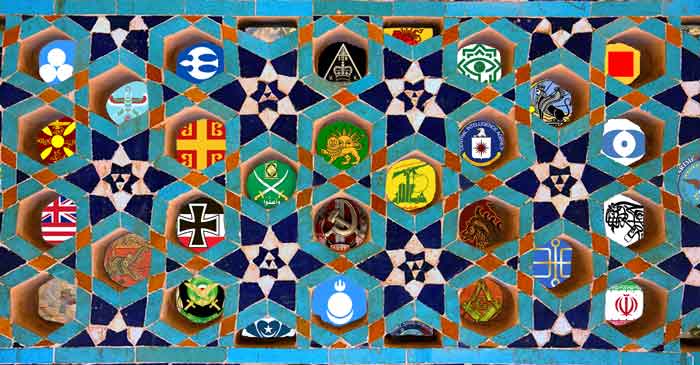
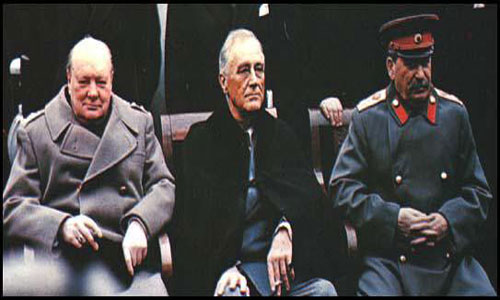

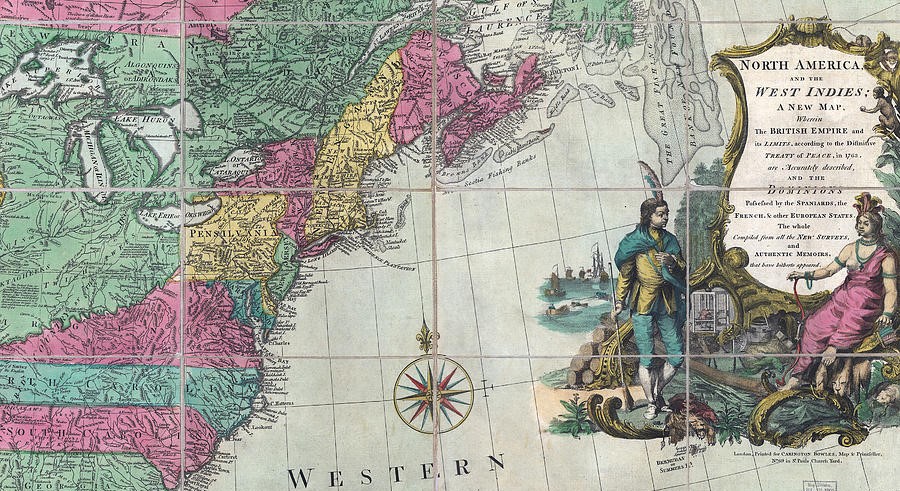
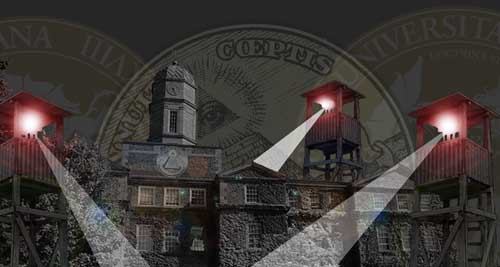
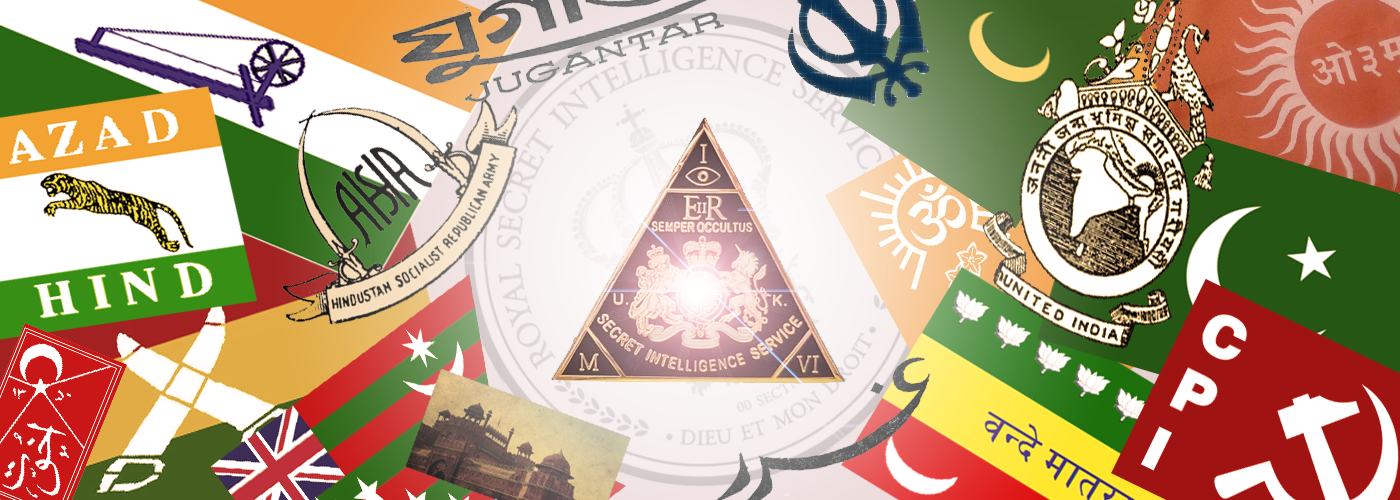




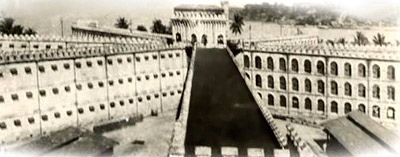


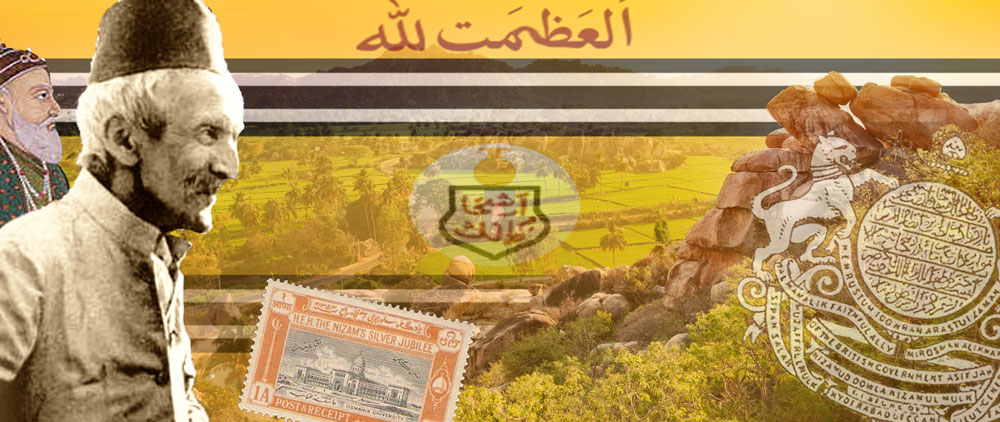





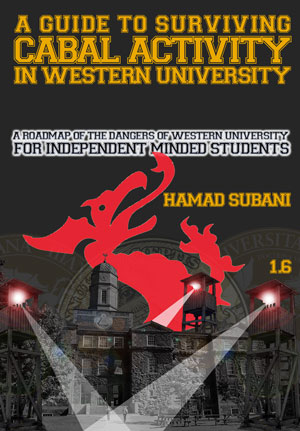
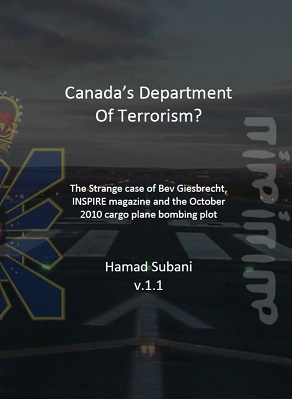
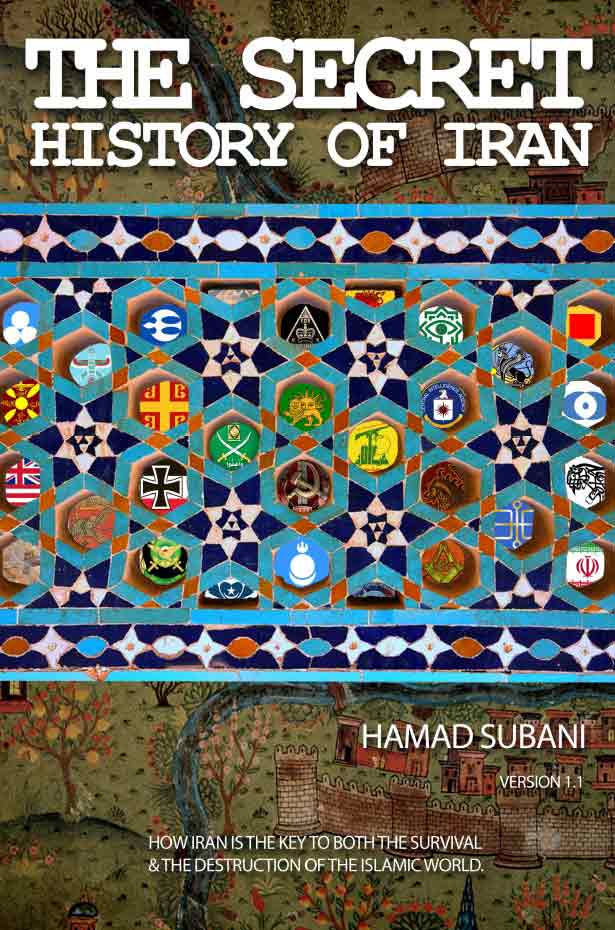
The First Freemason Lodge in India was not at the Gosha Mahal Baradari Hyderabad. It was a grand building built by teh Last Qutub Shahi ruler Tana Shah in 1682 and was donated to teh freemason by Nizam in 1872.
The first lodge was established for the British Military and other authorities in India in 1728 at Fort William Calcutta called Star of the East.
The doors of freemason were opened for Indians in 1775, when Nawab Umdatul Umra of Carnatic opened first lodge in Trichonopoly, in South India.
Please refer Freemasonry in India
https://linfordresearch.info/fordownload/World%20of%20Fmy/Nairn%20India.pdf
Shoukat Ali Khan Hyderabad India
Thanks for this.
The grave of Aurangzeb is in the premises of a Dargah in Khuldabad near aurangabad. there is no tomb over it nor even a structure.
Taj Mahal like structure is in aurangabad, whichis around ten miles away from his grave.
So what you have mentioned about his grave is not correct.
Thank you for the clarification. The Taj Mahal like structure is actually the tomb of his wife. I have corrected.
Gosh !!! what an intellectual article . Very first time I got to read something eloborative on Shah Waliulllah and the reason of his invitation to Abdali. You are incredibly remarkable in presenting the profoundness and minute details on the subject. Are you a historian or have you written any books.
Share your articles or suggest some books on historical India from Muslim rulers point of view. Had enough of Aurangazeb bashing and Muslim rule criticism nowadays around. So was wondering the justification from the other side.
Please do share.
You could take a look at my book The Secret History of Iran. Since the history of medieval Iran is linked to that of India, it does contain a lot of previously undisclosed information on the Mughals and other Indian dynasties as well.
Qasim Rizvi did not escape , he did his prison term and was relocated to Pakistan by the Indian government . I find lots of unsubstantiated facts in your write up.
This is not the official history of Hyderabad State, it is the Conspiracy History of Hyderabad State, where we try to fill in the blanks in the official narrative. Its not for everybody. Do you really think Qasim Rizvi would be let go so leniently?
Hi, certainly, history of Hyderabad is enticing. I have come across a novel “Theft of Nizam’s Gold” by a writer from Hyderabad, Naser Banaqeeb who presented the life of Nizam in a wonderful way. The novel is a gripping tale of bygone era of Nizam, love and mystery of the gold stolen – the history doesn’t have any record of it. Yes, the gold stolen from Nizam’s treasure has no mentioning in any books. But, the author described the same in an artistic manner. The novel is available online at amazon.
Dear Abraiz Ali Khan,
I am based in Mumbai and an avid reader of “authentic” historical books.
I would be much obliged if you could share with me any such books in your possession, including “Tragedy of Hyderabad”.
My contact details are: iyerpnpl@gmail.com
Warm regards,
Arvind Iyer
Hello Mr. Arvind. This is the book I have mentioned: https://www.goodreads.com/book/show/18360701-tragedy-of-hyderabad
I found it in a Sunday, second-hand book market. Currently, this book is with my brother who lives in Canada. Sorry for not being able to share it.
Dear Mr. Abraiz,
I have a nephew in Canada whom I will be meeting at a family function in October. If you can share with me the contact details of your brother in Canada, my nephew can coordinate with him and photocopy the book and hand it over to me when we meet.
Incidentally I am in Hyderabad on Monday June 25th. I would be very happy to meet with you.
Once again my email id is: iyerpnpl@gmail.com
Warm Regards,
Arvind Iyer
Pl visit Haziq and Mohi a book store near Charminar , they have copies . Picked up my copy of Tragedy of Hyderabad and other books on hyderabad from there . The store finds a mention in The Last Nizam by Jhon Zubrcki and is regularly frequented by history buffs , most notable being William Dalrymple , he has given a beautiful account in The White Mughals of William Kirkpatrick the British resident during the end of the 18th century and his affair with Khai un Nissa great niece of Aristu Jah the prime minister at Nizam Ali Khan’s court . He eventually ended up marrying her and converted to Islam . Most of his research work was carried out by literature provided by Haziq and Mohi .
Hello Mr Iyer , you can get the book and many other out of publication books on Hyderabad at Haziq and Mohi book store near Charminar . The store finds a mention in the Last Nizam by Jhon Zubrycki and is frequented by history buffs from India and abroad , most notable being William Darlymple whose book The White mughals revolves around the stories of William Kirkpatrick the british resident at the end of 18th century in Hyderbad and his affair with Khai un Nisa the great niece of Aristu Jah the prime minister of Nizam Ali Khan , which he later marries and converts to Islam .
You may also be interested in The Destruction of Hyderabad by Abdul Gafoor Abdul Majeed Noorani. No idea where to find it though.
Its overwhelming to read this..present day hyderabadis are so ignorant about their past. . I wish many of them could read this
Assalaamualaikum. I am a citizen of Hyderabad itself. Born and brought up here. I do have an interest in our history as well. You have written a very engaging piece of research. Do accept congratulations for it. As it happens, there are a few points that I do disagree with. One is your saying that venerating graves is an “Islamically abhorrent practice.” But maybe you subscribe to one of those sects that see graves as idols, so let it pass. I don’t need to tell you that scholars have compiled voluminous works on this subject. Read them if you will.
The other point that raises my hackles is the flippant description of Jamia Nizamia. As it happens, I am closely related to this institution. All my teachers of Islamic sciences have studied at this institution. Your description of it stems of ignorance or, if you will excuse me for saying so, your prejudice against those venerate graves. Jamia Nizamia was started in 1876 AD. Its founder, who was the teacher (Ataleeq as they called them then) of the 6th and 7th Nizams, passed away in 1917. If you would look into the history of Jamia Nizamia and its scholars, you would see many un-Islamic activities and trends being checked by them. Keep in mind that it was a nascent institution without any power of enforcement. Which means that Jamia Nizamia could only tell that something was wrong and must be stopped, but could not actually go out and stop them. Frankly, there are many firsts the credit of whom goes to Jamia Nizamia and more specifically its founder, Imam Anwarullah Farooqui (May Allah shower His Mercy on him). Hyderabad was the only state to have departments of Qazaath – where marriages, divorces, etc. were registered, the only state to outlaw reprehensible Hindu customs like Murli, etc., the only state to have standardized weights, possibly the only state or one of the very few which trained people with a standardized syllabus to administer basic Islamic laws to the populace. The State Central Library (earlier known as Asafjahi Library) was established at the behest of Shaykh Anwaarullah. No, they were nor politically active. As I said, it was a nascent institution, just started. Maybe in time, if Hyderabad state would have been there, they would have played a greater role.
The best part about your piece is that you give sources. I do have some of the books like Tragedy of Hyderabad with me. I will surely read up as much as I can the source books that you quote and see your point of view in much broader and richer detail.
Best of luck for your future research.
Assalaamualaikum.
Thank you for the additional info on Jamia Nizamia. While I do accept that Jamia Nizamia did in fact play a positive role, I believe that the fact that it was an official institution limited and hindered its ability to fulfill its role in a more wholesome manner. For example, they could not critic the sponsorship and inclusion of Shiite practices of later Nizams. And by and large, they did fail to enlighten the Muslim population, as evidenced by the level of ignorance and the incorporation of non-Islamic practices into Islam by the common people. If The Powers That Be were serious about Islam, they would have supported it more thoroughly, perhaps with a budget much bigger than the war aid they gave to Britain. As you mentioned, they started doing so, but it was too little, and too late.
In Islamic history, Muslim groups attain political power only when they start imposing and reinstating the natural order of things. Otherwise nature overcomes them. Towards the end, the Nizams began failing to maintain their holistic connection to the Mystery Saint.
Dude you are awesome. Where you been?
Do you have any recommendation for occult conspiracy sites with muslim perspective?
The main reason why it’s so hard to find this is the cultural lag muslim readers annnd writers have due to the ravages of colonialism westernization and the like. In the world that emerged after ww2 seems the only ticket for indians and muslims to prosper in the west was the sci/tech route. So as a fractured bordered nation, there was not much literal development.
For example most muslims i know go as far as saying 911 was ‘possibly’ a conspiracy and that Kanye or whoever is a free mason, and that’s as far as it goes. They will never include the saudis or big banks or the company they work for.
Anyway look forward to reading your next masterpiece.
The only “Islamic” Conspiracy website that I find worth a mention is that of David Livingstone> http://www.conspiracyschool.com/